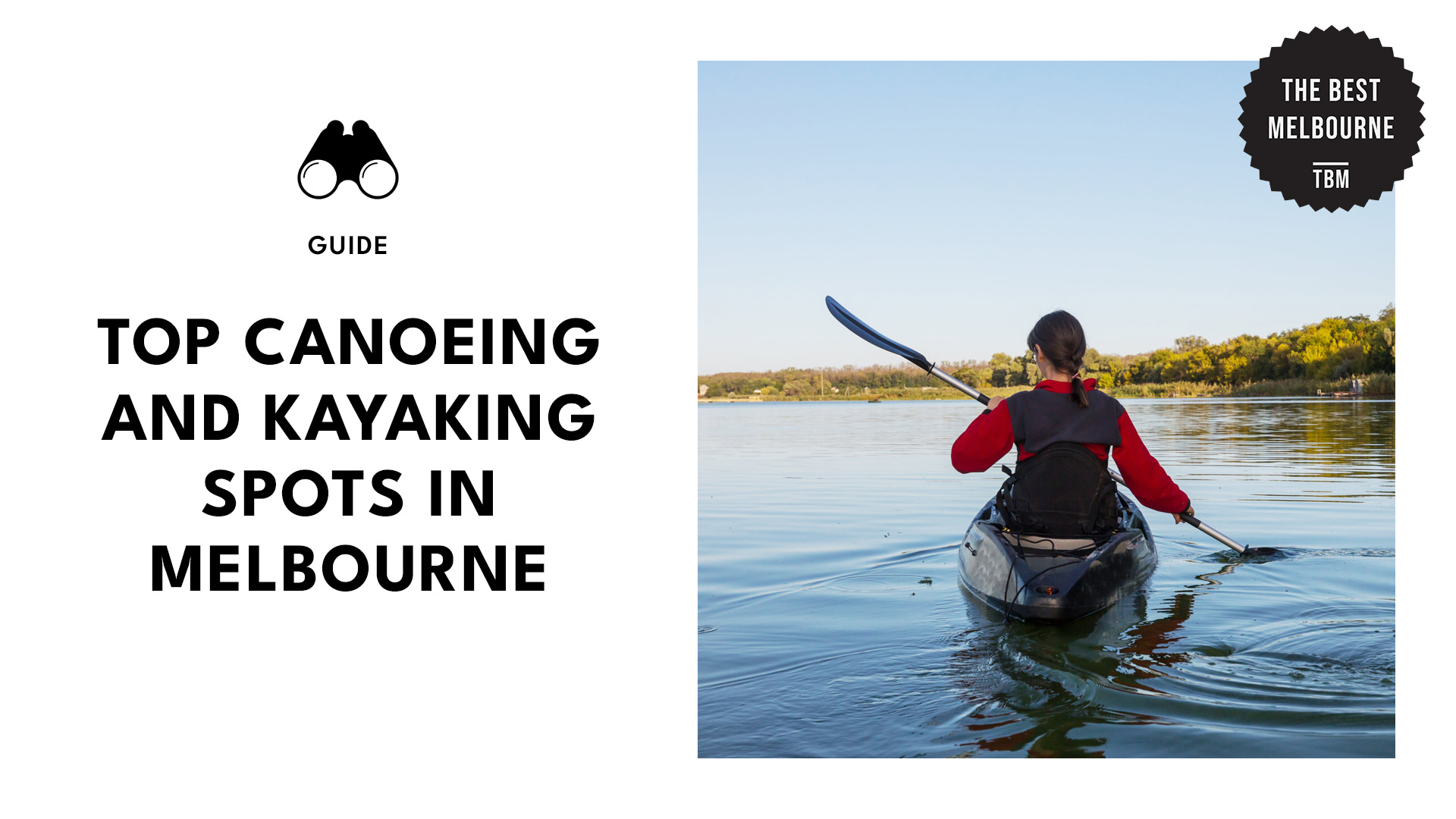The top 10 canoeing and kayaking spots in Melbourne that you must visit
Kayaking and canoeing are more than just a hobby or a recreational activity. In fact, they’re a low-impact, full-body workout that can improve posture and strengthen the upper body.
Research shows that spending time in or around “blue spaces,” like lakes, rivers, or the sea, can help you focus better, reduce stress, and improve your mood. So, it’s like a workout and therapy in one.
Canoeing and kayaking in Melbourne is something that many individuals love doing in their free time. If you, too, are after peace and movement, you’ve come to the right place.
1. Yarra River
– Media credit: Yarra River Melbourne
Website: https://yarrariver.melbourne/
If we talk about convenience, the Yarra River is probably the best spot you’ll find in Melbourne, and one of the most diverse ones too. You can start from various points like Bellbird Park in Kew, Studley Park Boathouse, and more.
The lower part of the Yarra River is perfect for beginners because it’s calmer, and it’s where you’ll find most of the beautiful scenery in the city.
Meanwhile, the upper part of the river is generally recommended for experienced kayakers due to the rapids (Grade 1 to 3) and potential hazards like fallen trees.
If you want to secure your safety by being attended to by professionals, you can always opt for guided tours like Kayak Melbourne.
The Yarra River enforces many rules to ensure order and safety for kayakers and canoeists — just paddle on the right-hand side of the river and adhere to all river markers and exclusion zones.
Pro tip:
Any craft moving downstream has the right of way due to the direction of the river flow. Keep this in mind during your tour.
2. Mornington Peninsula
– Media credit: Mornington Peninsula
Website: https://www.visitmorningtonpeninsula.org/
Adding a little bit of sea life sightings while paddling doesn’t sound so bad at all. If you choose the Mornington Peninsula as your canoeing/kayaking spot, there’s a fair chance that you’ll make friends with a dolphin or a seal.
Many operators offer guided tours that will take you to popular spots like the Dolphin Sanctuary and Point Nepean National Park. There are also rentals for self-guided tours.
If you’re into improving your skills, many operators offer training courses as well.
The front beaches of the Mornington Peninsula, where the waters are calmer, are perfect for beginners and families who just want to chill and snap a few pictures.
Pro tip:
All marine animals are wild, so sightings are not always guaranteed. However, the tours are still fun and educational, in a way that the guides provide information on the marine life around and points of interest along the way.
3. Gippsland Lakes
– Media credit: Visit Melbourne
Direction:
As the place is surrounded by many rivers, this only means one thing: endless paddling options. This makes paddling accessible for beginners and multi-hour paddling possible.
Some operators even offer an overnight experience where you can paddle on the outskirts of the lake’s entrance with a lakeside camping inclusion.
The Gippsland Lakes are home to the Burrunan dolphins, so it’s possible to spot one while paddling around. These rare species are often seen popping up around the Lakes entrance and jet ski dock areas.
Not only that, the place is also a goldmine for birdwatchers, with black swans, musk ducks, fairy terns, and many more on site.
Pro tip:
Some kayaks or canoes have limited storage space for camping gear, so we suggest packing light.
4. St. Kilda Beach
– Media credit: Katesrun
Directions:
St. Kilda Beach is considered one of Victoria’s premier waterways for paddling. You have a variety of options if you want a beginner-friendly experience just within the breakwater, or prefer a more exposed paddling route along the coastline.
The best part is you’ll be able to see the beautiful skyline during your paddling, and if the timing’s right, you might even spot penguins waddling along the pier.
Maybe the only thing to keep in mind is that the area is not dedicated to paddlers alone. You need to be aware of your surroundings, as you might encounter ferries cruising along the waters.
You can always opt for guided tours for a safer and more enjoyable experience.
Pro tip:
Wind and wave conditions can change fast, especially in the exposed areas. That’s why the best time to head out is early morning, around 7 AM, when the water is calmer and boats are fewer.
5. The Murray River
– Media credit: Danovich
Directions:
Being Australia’s biggest, The Murray River offers diverse experiences for both beginners and experienced paddlers. There are various routes available, from creeks, lakes, the main river channel, and more.
Along with the kayak and canoe activities, you can also do a little bit of fishing along the way and even have a picnic.
Feel free to bring your own canoe/kayak, or you can rent one from many rental services in the area.
Self-guided tours are fine, but if you want a more personalized experience, guided tours are available that typically last anyway from a few hours to multiple days.
Pro tip:
Many paddlers recommend paddling upstream first, when your arms still have strength. It’ll help avoid fatigue against the current on the return trip — you’ll just have to float lazily with the downstream current.
6. WIlliamstown
– Media credit: Tony Bartel
Direction:
If you want an experience free from the worries of challenging tides and strong river currents, Williamstown is the place to go. It gets busy with sailing clubs and jet skis on weekends, though, so for a more peaceful time, try weekday mornings.
Some launch points are protected by breakwaters, so if you’re going with kids or first-timers, you can paddle on this part, worry-free. If you’re going into a more exposed area, expect to skim along past yachts and fishing boats.
You can venture out a little toward Jawbone Marine Sanctuary as well. It’s a lesser-known spot where you can spot diverse marine life swimming around.
Pro tip:
Yes, Williamstown is protected, but winds from the north can make paddling a workout, especially toward Jawbone or across Altona. Make sure you keep track of the wind using a real-time app tracker.
7. Lake Nagambie
– Media credit: Trish Wright
Direction:
Lake Nagambie is a man-made lake that’s a popular spot for various water activities, and its surrounding native plants and wildlife.
Aside from the constant water level, the climate is mostly gentle, and there’s a wide array of accommodation and facilities around.
For paddling, visitors can rent canoes, kayaks, or other vessels to explore the waterways. There are options available for both beginners and experienced paddlers.
Sometimes, the Nagambie Lakes Regatta Centre hosts rowing and canoeing events, which is great if you want to be a little competitive. So make sure you stay tuned to their official pages if you’re interested.
Pro tip:
You can avoid high winds if you stick to the southern shoreline. Thanks to the trees and land contours, the shoreline can keep your return trip safer.
8. Brighton Beach
– Media credit: Thais Nascimento
Direction:
On most mornings, the waters at Brighton Beach are calmer, which is perfect for kayaking or canoeing.
On clearer days, if you venture a little further from the shore, you’ll have a fair chance to see across to the You Yangs and Geelong. But if you want to stick near the coastline, that’s okay too!
It’s also important to be aware of the sea conditions before heading out, as they can shift rapidly. In case of poor sea conditions, some operators offer a kayaking experience in the sheltered waters of Brighton Marina.
Aside from kayaking and canoeing, you can also enjoy other watersports at Brighton Beach, like stand-up paddleboarding and even zip-lining.
Pro tip:
Want to learn or improve your skills? Some operators in the area offer lessons for beginners and basic techniques for safety.
9. Lilydale Lake
– Media credit: Kirsty
Direction:
Lilydale Lake offers flat water with no current or tides. It’s a protected shoreline, so needless to say, it’s a safe place for beginners and kids.
It’s basically the best spot for anyone who feels intimidated by the open ocean or river flow. The lake is smaller than other spots and has an island in the middle, so it’s easier to navigate.
The place is surrounded by native plants and reeds, and oftentimes, you’ll share the water with ducks, coots, and the occasional swan.
The only downside is that the water can become murky after rain. While it’s not unsafe, the place becomes less scenic.
Pro tip:
Since the lake is surrounded by wetlands, mosquitoes tend to go out around sunrise and sunset, if you plan to paddle during this time of day, pack a repellent or wear long sleeves.
10. Barwon River
– Media credit: Nanette
Direction:
The best part about paddling along the Barwon River is that you can do loops. You can paddle upstream from Queens Park toward Buckley Falls and then float back.
The loop around Newtown and Highton is a favorite, as many paddlers say it’s best at sunrise or sunset, offering the best golden views and sightings of various bird life.
The Barwon River is tidal and can have strong currents, so always check weather conditions before going, and it is important to be aware of navigational markers.
For a safer and more informative experience, there’s always the option of joining a guided tour.
Pro tip:
For experienced paddlers, you can go all the way to Lake Connewarre via the breakwater. It’s about 14 km away, but it passes through wetlands, open water, and incredible bird habitat. Just remember to check the tides and wind beforehand.


